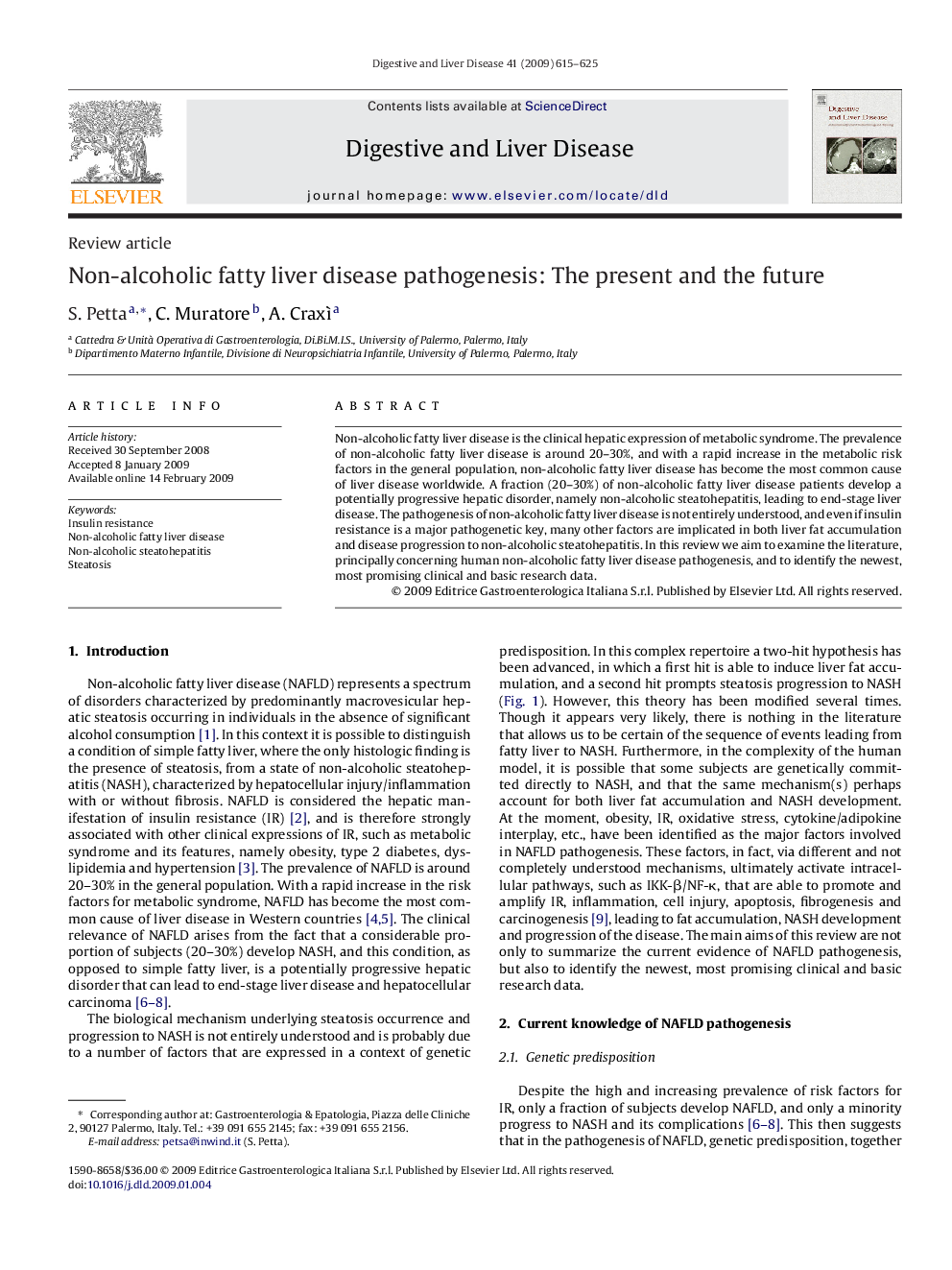| Article ID | Journal | Published Year | Pages | File Type |
|---|---|---|---|---|
| 3264386 | Digestive and Liver Disease | 2009 | 11 Pages |
Non-alcoholic fatty liver disease is the clinical hepatic expression of metabolic syndrome. The prevalence of non-alcoholic fatty liver disease is around 20–30%, and with a rapid increase in the metabolic risk factors in the general population, non-alcoholic fatty liver disease has become the most common cause of liver disease worldwide. A fraction (20–30%) of non-alcoholic fatty liver disease patients develop a potentially progressive hepatic disorder, namely non-alcoholic steatohepatitis, leading to end-stage liver disease. The pathogenesis of non-alcoholic fatty liver disease is not entirely understood, and even if insulin resistance is a major pathogenetic key, many other factors are implicated in both liver fat accumulation and disease progression to non-alcoholic steatohepatitis. In this review we aim to examine the literature, principally concerning human non-alcoholic fatty liver disease pathogenesis, and to identify the newest, most promising clinical and basic research data.
